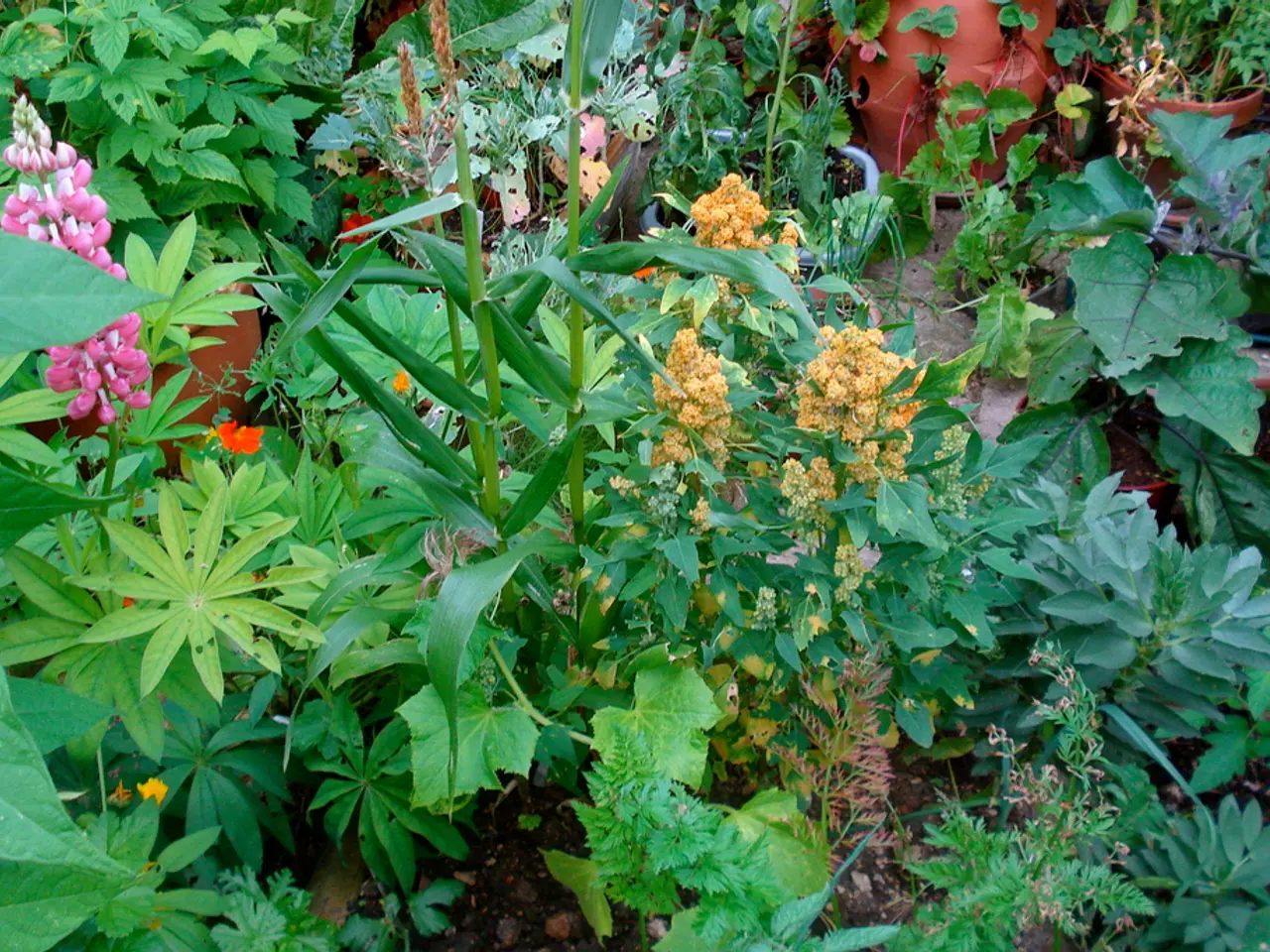Gear Up for Spring Bloom: Garden Preparation for Springtime
In the heart of spring, as the days grow longer and warmer, it's time to prepare your garden for a burst of life. Here's a comprehensive guide to help you get your garden ready for the season ahead.
**1. Clean Up**
Start by gently raking your lawn to remove dead leaves and thatch. Remove debris like branches, twigs, and fallen leaves from garden beds, ensuring not to disturb new growth. Remove protective coverings like burlap where necessary. Once the ground is dry, clear away old mulch from perennials, press soil back into place if frost has disturbed it, and remove spent annuals and weeds.
**2. Prune Appropriately**
Pruning is essential for shaping plants, encouraging new growth, and promoting more flowers and fruit. Cut back dead stems on perennials, and prune fruit trees and shrubs carefully, avoiding pruning spring-blooming shrubs before they flower since they set buds early. Shrubs like forsythias and lilacs are best pruned after blooming. Prune hydrangeas, roses, clematis, and overgrown shrubs to encourage healthy growth and remove damaged or diseased branches.
**3. Soil Rejuvenation and Bed Preparation**
Work a generous layer of fresh compost into garden beds to enrich the soil for planting annuals, perennials, or edibles. Lightly till the top 1–2 inches of soil to improve aeration and seed-to-soil contact. Avoid leaving bare dirt after seeding; cover with a thin layer of peat moss, compost, or topsoil to retain moisture and protect seeds.
**4. Mulching**
Apply organic mulch such as shredded leaves or wood chips on garden beds. Mulch retains moisture, suppresses weeds, and regulates soil temperature, all crucial for healthy plant growth.
**5. Fertilizing**
Use balanced fertilizers after soil preparation to provide plants with essential nutrients. Taking inventory of fertilizer needs and applying according to plant requirements will support robust growth.
**6. Pest and Weed Control**
Remove weeds early to prevent competition for nutrients and water. Consider herbicides carefully, especially prior to seeding lawns, and maintain vigilance against pests throughout the growing season.
**7. Additional Maintenance**
Check garden infrastructure such as paving stones, pond pumps, raised beds, water butts, hoses, and irrigation systems to ensure everything is in good shape and ready for spring use. Organize and sharpen tools such as pruners and lawn mower blades for efficient gardening.
By following these steps—cleaning, pruning, soil enhancement, mulching, fertilizing, pest control, and maintenance—you set a strong foundation to ensure your garden thrives throughout the spring and beyond.
Remember, when pruning, always use sharp, clean pruning tools to make precise cuts. After the garden beds are clean and pruned, it's important to layer on protection and provide essential nutrients to fuel spring growth. Applying a fresh, thick layer of organic mulch (like bark chips, sugarcane, or straw) suppresses weeds, retains moisture, regulates soil temperature, improves soil health, and fertilises plants. Soil rejuvenation is essential for a healthy garden, and this can be achieved by incorporating organic matter like compost, aged manure, or well-rotted leaf mould. Plants need a good nutrient boost as they emerge from winter dormancy, so choose a balanced fertiliser appropriate for specific plants.
For top-tier assistance getting your yard ready for warmer weather, contact your local Jim's Mowing team. With experienced franchisees living and working locally, they offer tailored advice and services to help your garden look and stay healthy.
- Adopting a top-tier lifestyle for home-and-garden enthusiasts involves enriching soil, pruning plants, and applying mulch to prepare the garden for spring. Organic matter like compost, aged manure, or well-rotted leaf mould can help rejuvenate the soil, while pruning encourages new growth and healthy plant development.
- To enhance the spring charm of the garden and promote soil health, consider layering on a thick organic mulch like bark chips, sugarcane, or straw after cleaning and pruning. By doing so, you can suppress weeds, retain moisture, regulate soil temperature, and fertilize plants, leading to a vibrant, beautiful garden.




